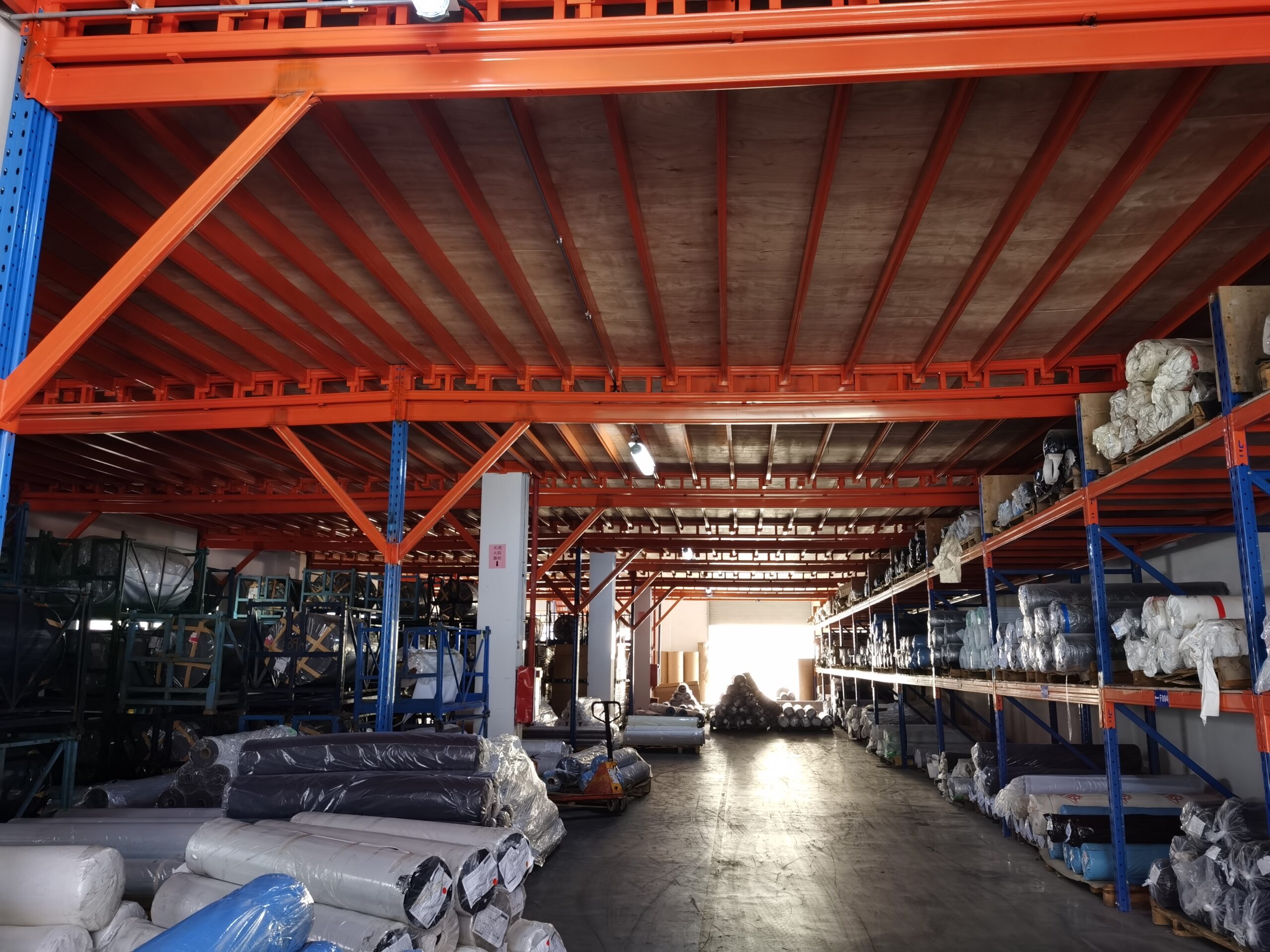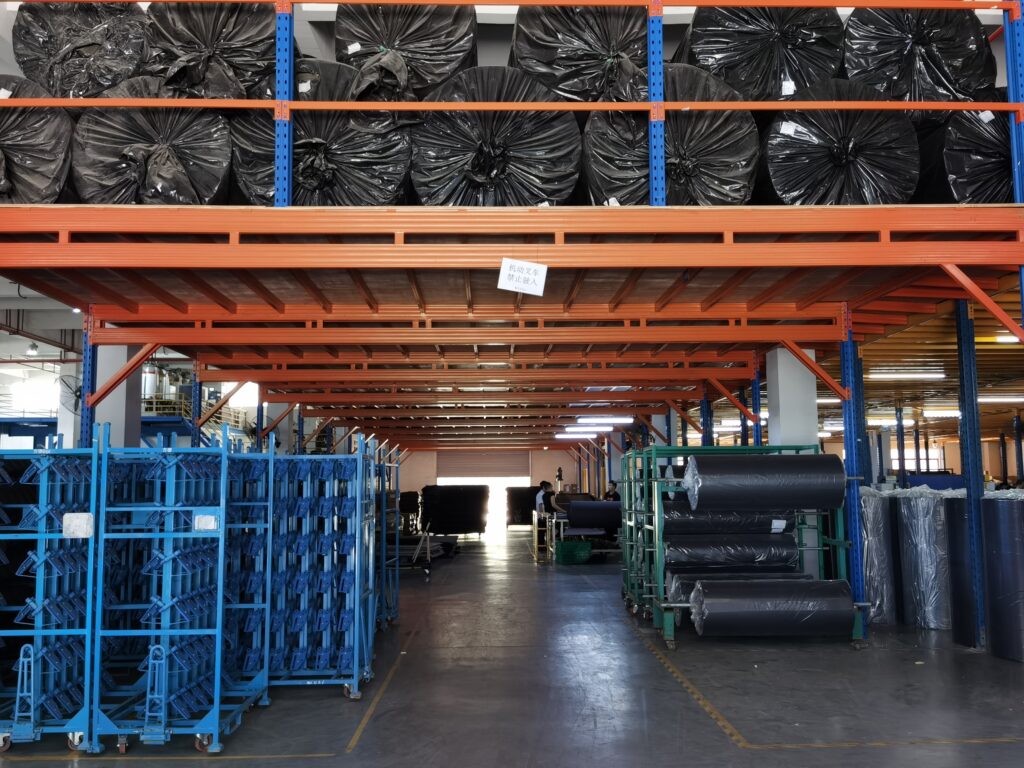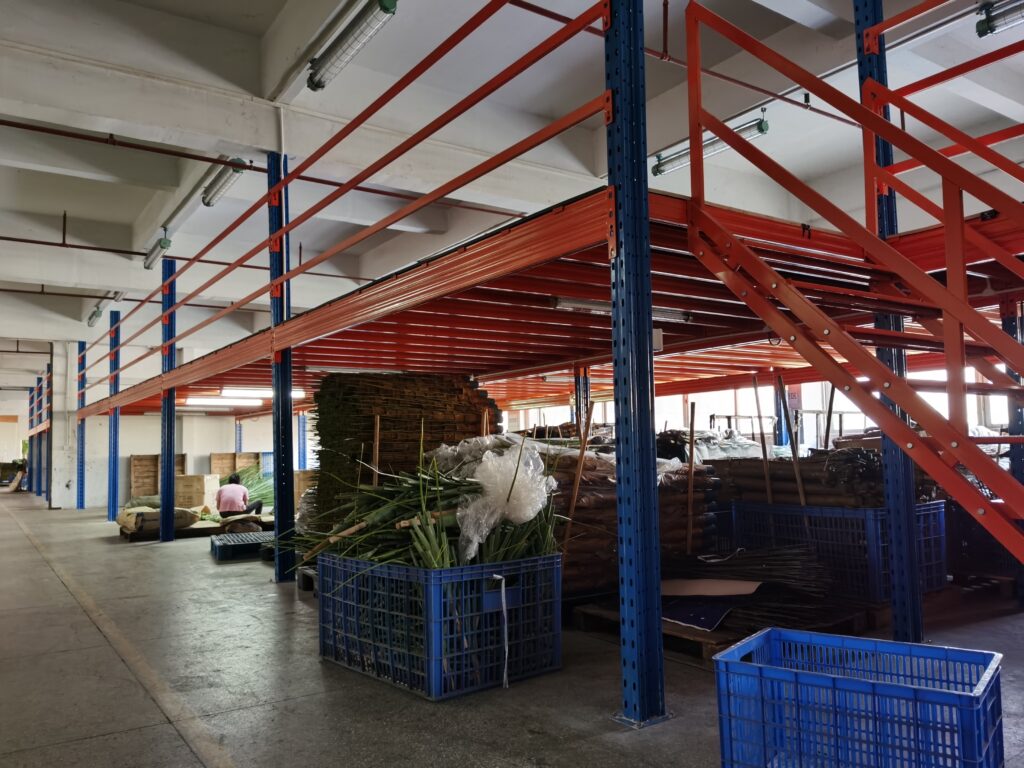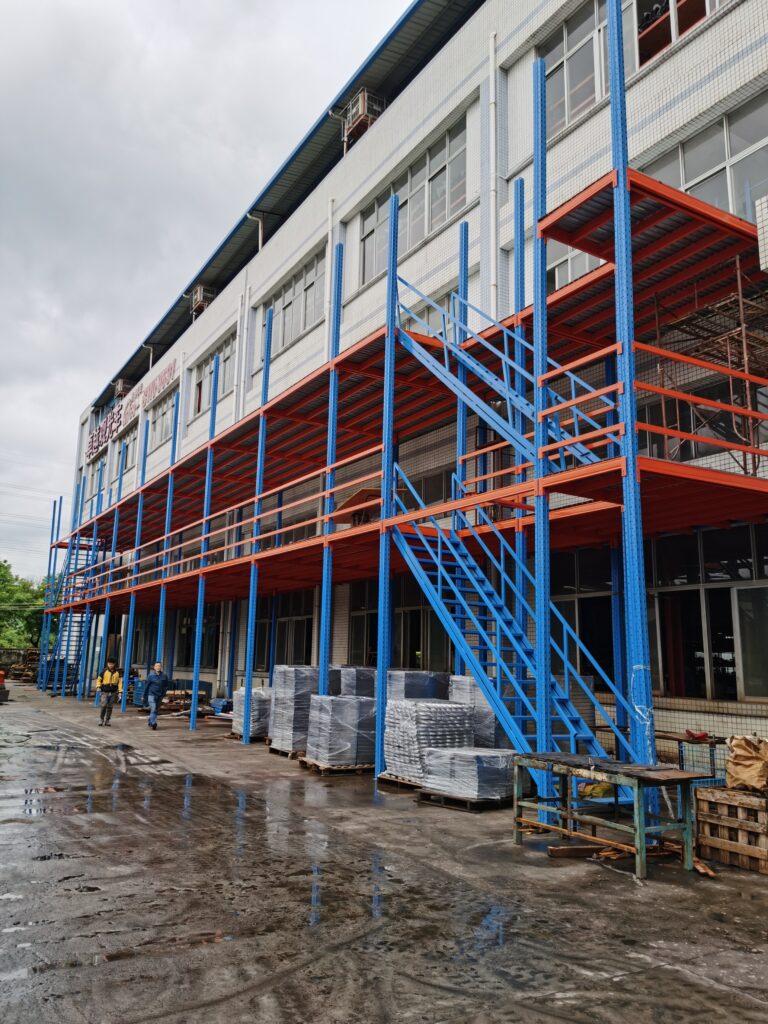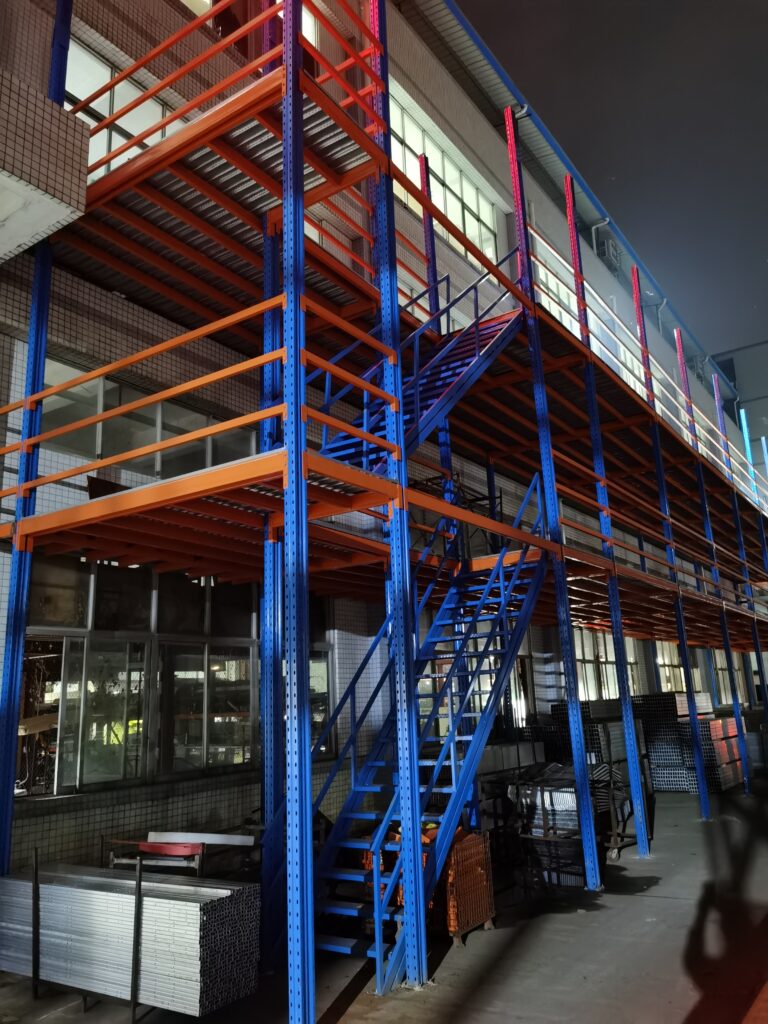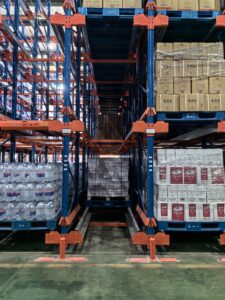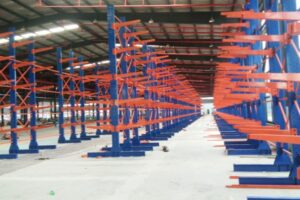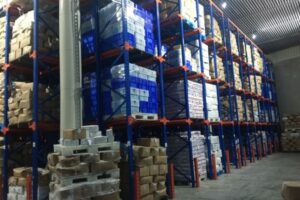一、What is a Loft Platform
A loft platform is a facility that takes advantage of a warehouse’s vertical height by constructing a second-level platform—using either a steel or concrete structure—to create layered storage spaces. It breaks the limitations of traditional horizontal storage and achieves a three-dimensional expansion of available space. StorLogi, a leader in the industry, designs its loft platforms using high-quality steel, coupled with meticulous structural design and strict manufacturing processes to ensure the platform’s stability and safety.
二、Design Principles and Structural Characteristics
(1) Robust Structural Support
The columns and beams of StorLogi’s loft platforms are made of high-strength steel, precisely calculated and designed to bear substantial loads. For example, in some large logistics warehouses, the platform can support up to 1.5 tons per square meter or even more, meeting the needs for storing various heavy cargo. The connections between the columns and beams are achieved through advanced techniques such as high-strength bolt connections or welding, ensuring the overall integrity and stability of the structure.
(2) Flexible Layout Design
The layout of a loft platform can be customized based on the actual shape of the warehouse, the characteristics of the stored goods, and the operational workflow. It can be designed as an open, large space to facilitate the movement of large equipment and centralized storage of goods, or it can be segmented into multiple smaller areas to store different types and sizes of goods, thereby enabling precise management. For instance, in electronic product warehousing, the loft platform can be divided into various storage units based on product type and size, improving storage efficiency.
(3) Safety Protection Facilities
Safety is paramount in warehouse operations. StorLogi’s loft platforms are equipped with comprehensive safety protection features, such as guardrails and anti-slip panels. The guardrails are built to meet safety standards and are made from robust materials, effectively preventing personnel and goods from falling off the platform edges. Additionally, anti-slip panels installed on the platform surface increase friction, ensuring safe movement for both personnel and goods even under wet conditions or during active handling.
三、Functional Advantages
(1) Significantly Enhanced Space Utilization
By constructing a loft platform, the storage area in a warehouse can be greatly increased. For example, in a warehouse of 1,000 square meters with a height of 6 meters, building a 3-meter-high loft platform can nearly double the available storage space without increasing the land area. This is of enormous economic value for urban warehouses, where land resources are limited and rental costs are high.
(2) Optimized Warehouse Operation Processes
Loft platforms allow for the layered storage of different types of goods, which streamlines the warehousing process and increases efficiency. For example, high-turnover goods can be stored on the first level for quick access, while bulky but lightweight items can be stored on the upper loft platform, making full use of the available space. Combined with appropriate handling equipment, such as forklifts and elevators, this setup enables rapid movement and circulation of goods, thereby enhancing overall operational efficiency.
(3) Adaptation to Diverse Storage Needs
Whether storing lightweight items such as electronic products and clothing or heavy items like machinery and building materials, loft platforms can be designed and laid out to suit the characteristics of the goods. Their flexible space partitioning and load-bearing capacity make them adaptable to the varied storage needs of different industries and enterprises.
四、Application Scenarios
(1) E-commerce Warehousing
The e-commerce industry deals with enormous order volumes and requires high-speed order processing. Loft platforms can provide additional storage space for e-commerce companies. With a well-designed layout, goods can be organized into zones based on popularity and category, which, combined with efficient sorting systems, greatly improves order processing speed. During major promotional events such as “Double 11” or “618,” the advantages of loft platforms become even more apparent, effectively handling the surge in storage and sorting requirements.
(2) Manufacturing Warehousing
Manufacturing enterprises typically need to store large quantities of raw materials, components, and finished products. Loft platforms enable layered storage according to production processes and material requirements, facilitating easier access to materials and finished products. For example, in an automotive manufacturing plant, larger auto parts can be stored on the upper loft platform while frequently used smaller components are kept on the first level, thus supporting rapid access along the production line and improving production efficiency.
(3) Logistics Distribution Centers
Logistics distribution centers process a large number of goods from various origins and destined for different locations. Loft platforms can serve as temporary storage and sorting areas for goods. With careful planning, they enable rapid classification, storage, and transfer of goods. Additionally, when integrated with transportation equipment and information management systems, they contribute to a highly efficient logistics operation system.
With continuous technological advancements and the evolving warehousing industry, loft platforms are also undergoing constant innovation and upgrades. In the future, these platforms are expected to become increasingly intelligent—for example, by incorporating sensors to monitor the storage status of goods and the platform’s load-bearing conditions in real time, and by utilizing automated equipment to handle and store goods automatically, further enhancing operational efficiency and safety. Additionally, the use of environmentally friendly building materials and energy-saving equipment will help reduce the environmental impact of warehouse operations.
In summary, as an efficient solution for utilizing warehouse space, the loft platform offers significant advantages in terms of increasing space utilization, optimizing operational processes, and meeting diverse storage requirements. StorLogi will continue to uphold its innovative spirit, providing customers with high-quality and efficient loft platform products and services, thereby supporting the development of the warehousing industry.
 StorLogi
StorLogi
